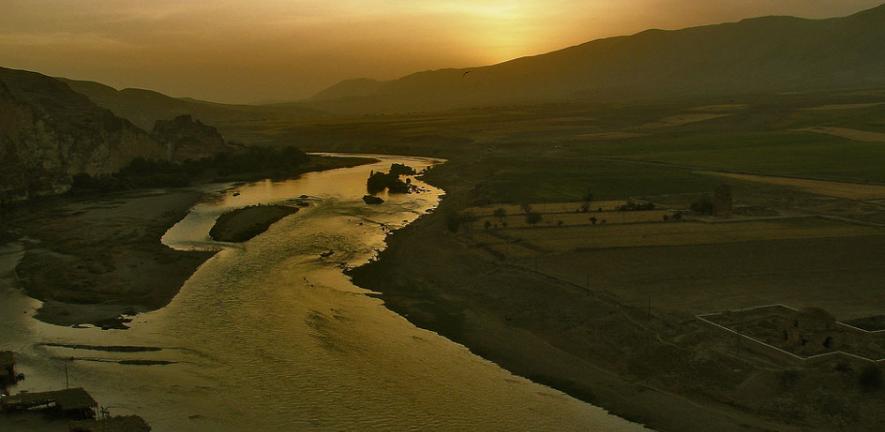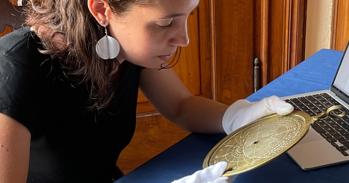
Current estimates suggest that a language dies every two weeks. Here, Geoffrey Khan describes the documentation of a group of dialects before they are lost forever.
Current estimates suggest that a language dies every two weeks. Here, Geoffrey Khan describes the documentation of a group of dialects before they are lost forever.
There is now a great urgency in the task of systematically documenting one group of dialects, whose roots lie in the ancient Semitic language of Aramaic, before their imminent demise.
Over 6000 languages are currently spoken worldwide but many are in danger of dying out. Some dialects are lost through political upheavals, scattering populations whose children grow up speaking the language of their new home; for others, social tensions persuade communities to lose one dialect in favour of another. Unlike the loss of biodiversity, this type of endangerment goes largely unnoticed and yet the loss of linguistic diversity, and the history and knowledge that languages embody, is equally as lamentable.
There is now a great urgency in the task of systematically documenting one group of dialects, whose roots lie in the ancient Semitic language of Aramaic, before their imminent demise. Since October 2004, Geoffrey Khan, Professor of Semitic Philology in the Faculty of Asian and Middle Eastern Studies, has been directing a research team in an Arts and Humanities Research Council (AHRC)-funded project that is preserving this knowledge in an entirely new way.
Ancient roots
Aramaic has survived into modern times as the spoken vernacular language in various areas of the Middle East. Neo-Aramaic, as it is known, consists of a very diverse range of dialects that today differ considerably from earlier literary forms of Aramaic. In many cases, the dialects exhibit types of linguistic forms that are unique within Semitic.
The group of dialects spoken in south-eastern Turkey, northern Iraq, north-western Iran and the adjacent region of the former Soviet Union, known as North-Eastern Neo-Aramaic (NENA), exhibits particular diversity, comprising over 100 dialects spoken by Christians and Jews. Remarkably, those spoken by Christians are in all cases different from those spoken by Jews, even when the two communities have lived side by side for centuries.
Vulnerable voices
The NENA group of dialects are particularly vulnerable because of the great upheavals that have been suffered in the 20th century by the Jewish and Christian Aramaic-speaking communities in the region.
Jewish communities left the region in a mass exodus in the 1950s and now live, for the most part, in Israel. As for the Christian communities, a large proportion have been displaced in the past century: in south-eastern Turkey, for instance, virtually all the village communities were destroyed in the First World War and the survivors forced to flee their villages; and in northern Iraq, many of the Christian villages have been lost more recently through political disturbances in the region.
These catastrophes, together with a policy of Arabicisation by an Iraqi government intolerant of linguistic minorities, have driven a large number of Aramaic-speaking Christians out of the Middle East to make a new life in other countries. The diaspora have settled throughout the world, particularly in North America, Australia and western Europe. Such upheavals have brought the majority of the NENA dialects to the verge of extinction.
Tracing the last surviving speakers
To arrive at a systematic description of the surviving NENA dialects, much of the data have to be gathered in field-trips and it has become a major task to locate informants for many of the dialects. This applies all the more so to the most endangered dialects of the group, some of which have only a few surviving speakers, all of whom are advanced in age. For example, after a long hunt, Professor Khan finally managed to locate the final speaker of one dialect in Auckland, New Zealand. He was a man in his 90s who had originally come from a small village in northern Iraq. Similarly, the remaining half-dozen speakers of another dialect have been found, this time in a village in Armenia to which their ancestors had migrated from eastern Turkey at the beginning of the 19th century.
In the case of some of the NENA dialects, the surviving speakers remember the dialect of their parents imperfectly. Vocabulary relating to material culture is particularly prone to disappear quickly after the displacement of the communities from their rural villages in the Middle East. The physical deterioration of the speakers can also be a problem; elderly speakers often lack enough teeth to pronounce some words properly, especially those with dental consonants.
Having found surviving speakers, the process of describing an undocumented spoken language consists of more than simply recording an individual’s speech. There is an analytical dimension in which a linguist must use various means of questioning to tease out the complete structure of the language. Some cases turn out to be more arduous than others: one informant had great difficulty with the plural imperative of the verb ‘to open’ (i.e. the order ‘open!’ addressed to a group of people), insisting that this was not possible, since more than one person is not needed to open a window or door.
The most successful means of working with informants has proved to be through informal, friendly relationships, without any payment of fees. On one occasion, however, an informant was clearly conscious of the financial value of his knowledge and insisted on charging $2 for every grammatical form. Owing to the complex nature of his dialect’s verbal system, it became clear that the description of this particular dialect would be beyond the means of the available research funding!
Linguistic fingerprinting
In most cases, the speakers have no knowledge of the migration history of their ancestors. The grammatical structure of the dialects, however, is a ‘linguistic genome’ and one fascinating aspect of this project has been the finding that dialects sometimes contain evidence of population movements. In Azerbaijan, for instance, the Turkish language had an impact on the verbal system of the Aramaic dialects of the region. This influence can still be seen today in Aramaic dialects that are spoken a long way from Azerbaijan, as far as the Mosul plain in Iraq.
Preserving for future generations
A key and innovative element to this project has been the NENA database (NENAD), a tool developed by an IT team to accommodate and process the diversity of the dialects in the NENA group. The web-based resource allows efficient retrieval of linguistic data and audio recordings for individual dialects, of which over 70 have now been documented. Comparative displays of data from all the dialects in the database can be created, and a ‘smart’ version of the traditional dialect atlas displays the distribution of grammatical features across the dialect area.
Of course, linguists in most cases cannot keep endangered languages alive, given that the risk to the language is often rooted in social and political issues, but they can create records that are detailed and sophisticated enough to allow analytical study by future researchers over decades to come. By preserving the world’s rich history of linguistic diversity, we can enhance our collective understanding of human language and the peoples that have spoken them.
For more information, please contact the author Professor Geoffrey Khan (gk101@cam.ac.uk)
at the Faculty of Asian and Middle Eastern Studies or visit the NENAD website (https://nena.ames.cam.ac.uk/index-new.php).
This work is licensed under a Creative Commons Licence. If you use this content on your site please link back to this page.





